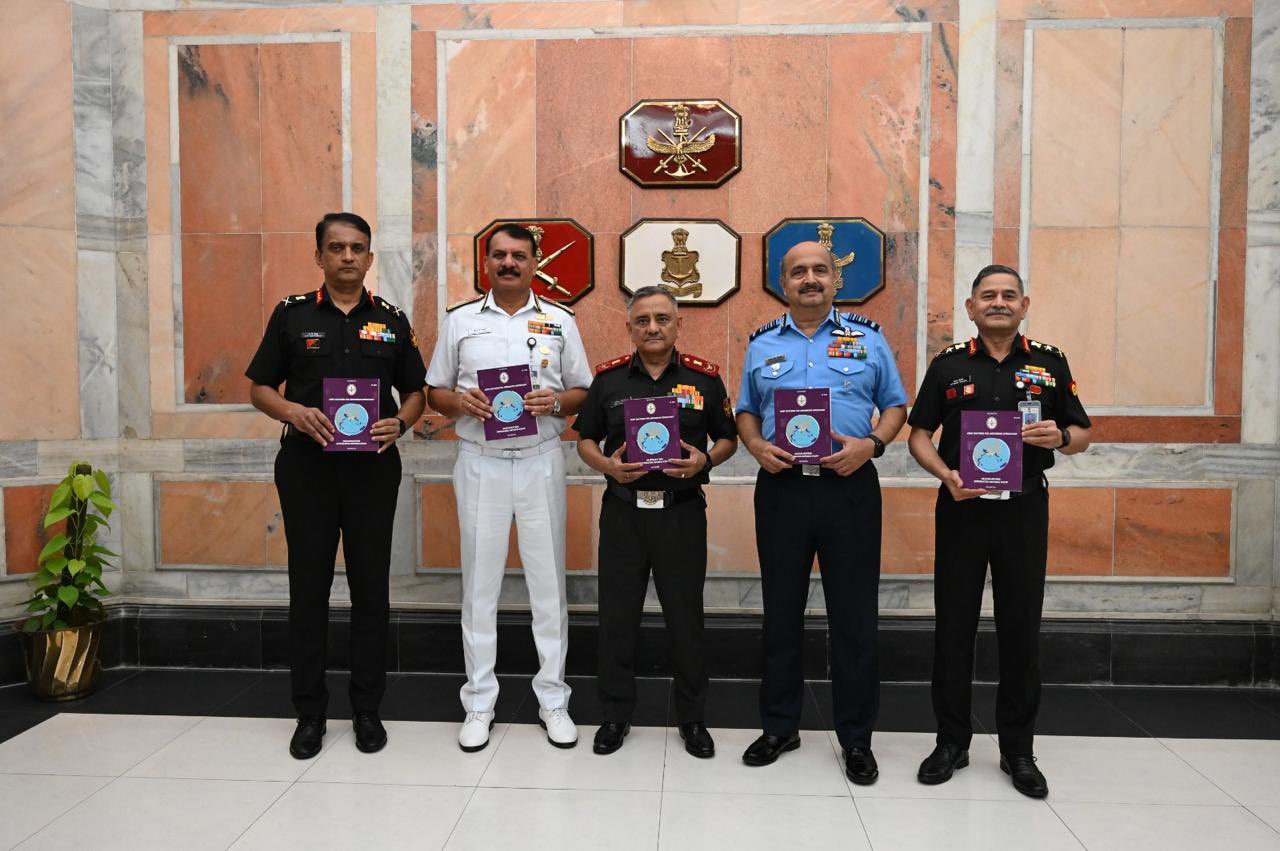Context:
On 7 August 2025, Chief of Defence Staff (CDS) General Anil Chauhan, who also serves as Secretary of the Department of Military Affairs, released the declassified Joint Doctrine for Cyberspace Operations and Joint Doctrine for Amphibious Operations during a Chiefs of Staff Committee meeting in New Delhi. The move highlights India’s growing emphasis on joint war-fighting capabilities, transparency, and integration in defence planning.
Features of the Joint Doctrine for Cyberspace Operations:
The doctrine provides a cohesive national strategy to safeguard India’s cyberspace interests. Key features include:
· Integration of offensive and defensive cyber capabilities across the Army, Navy, and Air Force.
· Emphasis on resilience in digital infrastructure.
· Real-time intelligence sharing among the services.
· Conduct of unified cyber operations for faster and more effective responses.
Need for Joint Doctrines:
Modern warfare increasingly demands seamless coordination among all branches of the Armed Forces. The shift toward multi-domain battlefields, grey-zone threats, and persistent challenges in cyberspace has made a unified operational approach essential.
Joint doctrines:
· Provide a common framework, language, and guiding principles for integrated operations.
· Enhance interoperability and reduce redundancies.
· Enable faster, coordinated responses to complex threats.
· Improve operational efficiency and strategic coherence.
For India, which faces diverse security challenges, these doctrines are crucial to strengthen national defence and create synergy between the Army, Navy, and Air Force.
Understanding Cyberspace:
Cyberspace is the global domain of information and communication technology (ICT) systems that process, store, and transmit digital data, regardless of whether they are connected to the internet. It has become a critical operational domain for modern militaries, alongside land, air, sea, and space.
Military Advantages of Cyberspace Operations:
· Real-time intelligence gathering for situational awareness.
· Enhanced communication and coordination between forces.
· Signal intelligence for intercepting and analysing data.
· Execution of offensive and defensive cyber operations to disrupt enemy networks or defend national systems.
· Support for faster decision-making at tactical, operational, and strategic levels.
Vulnerabilities in Cyberspace:
· Cyber warfare can disable military and civilian networks.
· Disruption of critical services such as energy, transport, or healthcare.
· Theft or manipulation of classified data.
· Potential to cripple economic and financial systems, impacting overall national security.
Role of the Chief of Defence Staff (CDS):
The post of CDS was created in 2019, following recommendations of the 2001 Group of Ministers based on the K. Subrahmanyam Committee Report. The CDS is a four-star General and:
· Heads the Department of Military Affairs.
· Acts as the Permanent Chairman of the Chiefs of Staff Committee.
· Advises the Ministry of Defence on tri-service and nuclear matters.
· Coordinates inter-service acquisitions and planning.
· Does not exercise direct command over service chiefs.
Conclusion:
The declassification of the Joint Doctrine for Cyberspace Operations marks a significant step in modernising India’s military thinking. As cyber threats grow in complexity and scale, the doctrine offers a structured and unified approach to defending national interests in the digital domain. By integrating cyber capabilities across the services and fostering interoperability, India is better positioned to safeguard its sovereignty and security in the information age.







